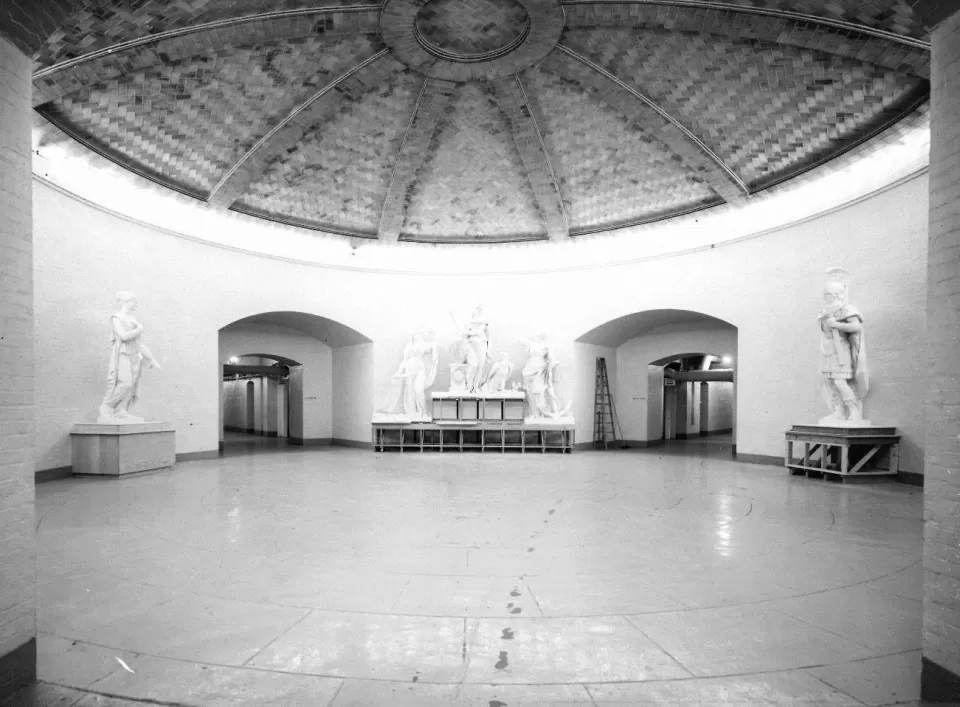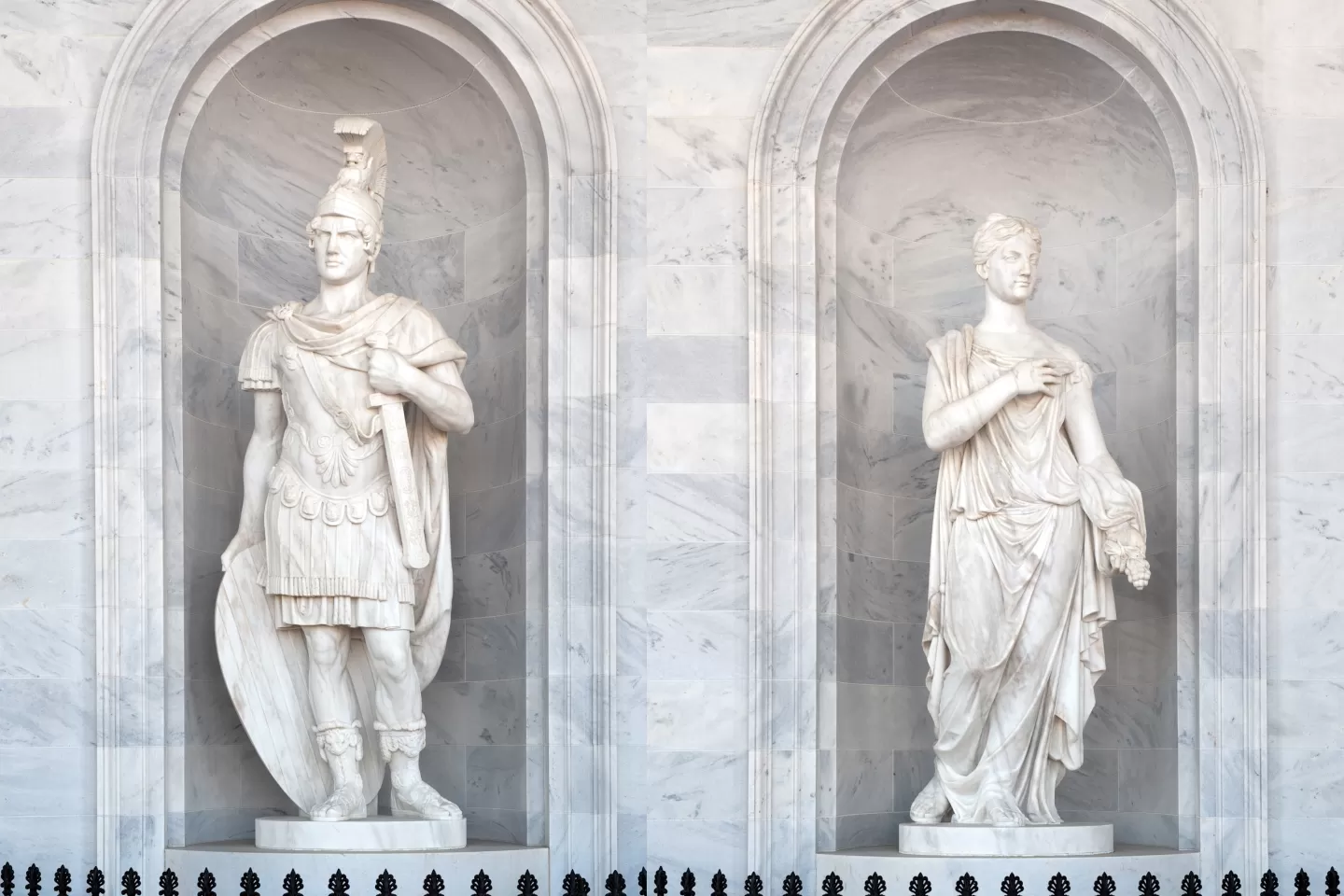Highlights
In the niche right of the East Central Front entrance is "War," a male figure with his head slightly tilted and his gaze fixed ahead.
His left hand holds the hilt of his sheathed sword and his right supports his shield as it rests upon the ground. He wears the costume of an ancient Roman, with a toga over his shoulders and a tunic extending as low as his knees; its border, like his belt, is richly ornamented.
"Peace" stands in a contrapposto pose in the niche left of the entrance.
She is a female figure dressed in simple, flowing robes with sandaled feet. In her left hand, she holds a fruit-bearing branch of the olive, which she extends towards "War," while with her right hand she points gracefully to her bosom.
History
The first figures of "War" and "Peace" that stood in the niches beside the Rotunda doors were works in marble, commissioned by Congress in 1829 from Italian sculptor Luigi Persico. They arrived in the United States in 1834 and were installed in 1835.
Over the years that followed, both marbles suffered severe deterioration. In 1958, the Architect of the Capitol initiated their replication as part of the U.S. Capitol East Front Extension project. A team was assembled to repair the damaged marbles, create new plaster models from them and carve the marble replicas with work supervised by sculptor Paul Manship. In a workshop on the U.S. Capitol Grounds, New York sculptor Carl Schmitz repaired the marble statues.
Parts of "War's" face, hands, helmet, armor, sword, clothing, feet and shield were gone; some of these missing parts had already been replaced in cement. Schmitz found that "Peace" was even more deteriorated than "War," "to the extent that large areas sounded like cardboard when tested and, upon the slightest scratch, broke and released the sand-like substance of the stone." During this phase of the project, much of which was guided by early photographs, work included applying plaster fills, working over surfaces with rasps or chisels and recreating parts as large as "War's" scabbard and "Peace's" left arm.

The plaster models of "War" (right) and "Peace" (left) seen in the Cannon House Office Building basement rotunda in 1960.
Upon completion of the repairs, George Giannetti of Maryland oversaw the creation of the molds and plaster models to create new marbles. The plasters were then transported from Washington, D.C., to Proctor, Vermont, where Manship supervised carvers from the Vermont Marble Company as they chiseled the marble replicas. In 1960 the new marble statues were placed in their niches in the new East Front facade. Also in 1960, the plasters were placed on view in the Cannon House Office Building rotunda, basement level, where they were seen by tens of thousands of people every year.
As the decades passed, the Cannon Building itself fell increasingly subject to the effects of time, and in 2015 the Architect of the Capitol began a multi-year building renewal project. Part of that project would require that the plasters of "War" and "Peace" be relocated, and the Architect of the Capitol undertook to have professional conservation assessment and treatment work performed. The plasters were repaired, cleaned, repainted and mounted on steel plates.
In late 2016, the congressional Joint Committee on the Library gave its approval to move the plasters to the niches long occupied by the very marbles from which they had been created. In 2017, the plaster models were installed in the niches now inside the U.S. Capitol, protected from the elements thanks to the East Front Extension.
